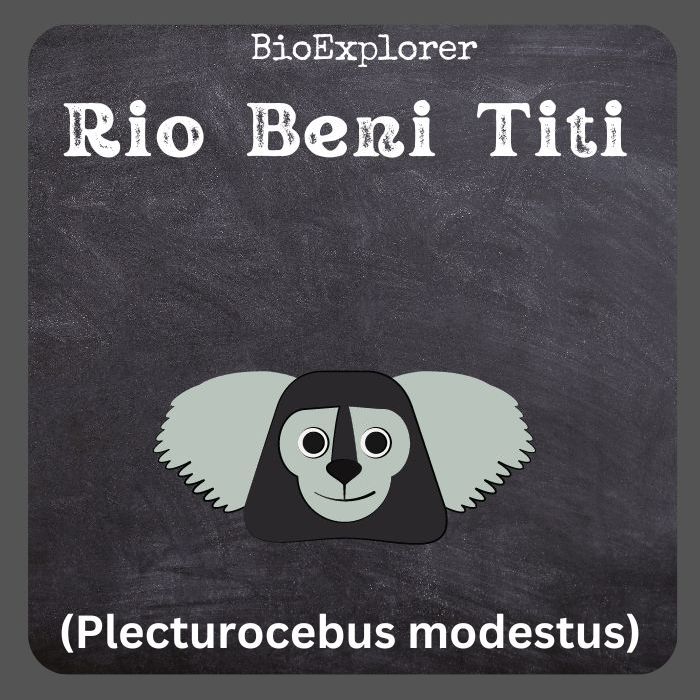Rio Beni Titi

| Kingdom | Order | Family | Genus | Species |
|---|---|---|---|---|
| Animalia | Primates | Pitheciidae | Plecturocebus | Plecturocebus modestus |

- Common Name: Rio Beni Titi
- Taxonomy Classification Year: 1939
- Monkey Size: 32 to 32 cm (12.6 to 12.6in)
- Skin Color(s): Grey to orange
- Habitat: Rainforest
- Diet: Omnivorous
- Native Countries: Bolivia
Rio Beni Titi Distribution
Rio Beni Titi Characteristics
The Rio Beni tití[1] is a New World Monkey species belonging to the genus Callicebus of the family Pitheciidae.
- It is native to Bolivia and is found mainly in the eastern parts of Bolivia in the upper basins of the Mamoré and Grande rivers.
- Rio Beni Tití monkeys are non-prehensile monkeys with an elongated tail, very few offspring, and an elongated skull.
- They have splayed hind legs with an intermembrane thickness of 75.
- The Rio Beni Titi monkey’s abdomen and chest are colored entirely orange to orange-brown. In contrast, the dorsal side and extremities are colored gray to orange agouti.
- The Rio Beni titi monkey’s tail appears gray or black, and they have white tufts on their ears. Their canines are pretty small, and their molars are quite simple.
- The Rio Beni titi monkey species is easily distinguished from its closely related species by its lack of prominent legs and strong cheek lines.
Rio Beni Titi Facts
- The Rio Beni tití monkey is an arboreal and diurnal animal that lives mainly in its family groups composed of 2 to 7 monkeys.
- Although male monkeys show some leadership level in these groups, there will be no dominance hierarchy between the sexes or other monkeys.
- Adult pair of Rio Beni titi monkey remains close to each other throughout their lives and organize their activities, so they do not spend too much time physically apart.
- Much of the Rio Beni titi monkey’s day is spent resting to digest its typically herbivorous diet.
- Generally, these titi monkeys roost closer to their group members on the vines of small trees.
Suggested Reading: All Monkeys
Cite this page
Bio Explorer. (2026, January 1). Rio Beni Titi. https://www.bioexplorer.net/animals/mammals/monkeys/rio-beni-titi/
